

What is WEST LAKE DRAGON WELL
West Lake Longjing(Xihu longjing) is the most famous green tea in China. It is produced in the mountains around Longjing Village, West Lake, Hangzhou City, Zhejiang Province, and has a history of more than 1,200 years.

What is Gaiwan, the Past and Present
在中国的茶具历史上,盖碗是一类年轻且至今仍被广泛使用的器物。
我们现在常见的盖碗一般有两种形制:第一种:在陈宗懋院士的《中国茶叶大辞典》中将盖碗解释为“炊具,多见瓷质,上配盖下配茶托,茶托隔热便于持饮”。这里描述的是上有盖,下有托,中有碗的三件式盖碗形制,盖为“天”、碗为“人”、托为“地”,寓意
“天、地、人”三才。此类盖碗又称三才杯,取“三才者,天地人”之意。还有一种盖碗的样式,是碗盖两件式——只有盖和碗,在《中国古陶瓷图典》中这样解释:盖碗,带盖的小碗,茶具,流行于清。

What is cloudy after cold in black tea?
什么是冷后浑?我不知道大家有没有发现 一个现象。就是我们在泡茶的时候,特别是红茶,我们在茶室里面给茶友倒一杯红茶 如果茶友没有及时喝掉,等茶汤冷了之后 我们会发现,原本橙黄透亮的汤色,竟然会变得有些浑浊。那么这个就是我们所说的冷后浑。

什么是金骏眉?
2005年,江元勋采用武夷山国家级自然保护区桐木村内高山茶树芽头为原料,在传承四百余年的正山小种红茶文化与制作技艺基础上,带领团队通过创新融合,研发出金骏眉红茶。
金骏眉的创始并非偶然之作,它离不开与江元勋的祖父江润梅和父亲江素生交往的上代茶人吴觉农、张天福和当代茶人骆少君、姚月明等等茶界先辈在产业、理念及技术理论上的无私帮助和支持;更离不开江元勋与正山茶业一批潜心探索的研发者和制作者。
时间回到2000年以前,为解决桐木茶叶滞销、茶山荒芜,开发国内市场,江元勋曾多次组织多位茶师一起探讨“桐木茶叶之出路”。 于1998年至2000年期间,桐木红茶大批改制乌龙;2002年至2003年间,江元勋在茶人龚雅玲女士的建议下,采用桐木村内细嫩芽头制作优质绿茶。这些为2005年金骏眉的产生积累奠定了良好的基础与经验。
时至2005年7月的一个午后,江元勋与北京张孟江先生等友人在正山茶业庭前小竹林闲聊“制好茶、喝好茶、购好茶”等话题。说者无意,听者有心,这些与江元勋的思路不谋而合。 恰在此时一家茶农几人从门前经过,去整理茶园(修剪),江元勋当即安排茶农专程采摘茶芽,以其充分利用;并立即着手指导江进发、梁骏德、温永胜等人尝试用芽头改按红茶制作工艺予以萎凋,因料少用手工辅以玻璃桌面揉捻以防断碎、采取温湿调控发酵、炭焙,得干茶三两。 第二天,江元勋即与张先生等共同开泡品尝。当沸水冲入,顿觉满室生香,汤色金黄透亮,滋味甘甜爽口、润喉、回味悠久,集蜜糖香、花香和果香于一体,高山韵味显,这就是后来被命名“金骏眉”的雏形。
随后,在张天福、骆少君等茶界前辈品评指导下,江元勋在原料和工艺上又进行反复试验、分析、比较,于2006年将金骏眉基本定型。
2007年,江元勋又根据品鉴反馈意见,进一步优化品质完善工艺后,金骏眉正式投放市场。“清、香、甘、甜”的口感符合国内清饮的习惯,快速被国人接受,高品质、高质量,不出几年就风靡全国。
为了规范市场,中华全国供销合作社发布了《金骏眉行业标准》,金骏眉创始企业正山茶业作为唯一企业参与起草制定。这份标准可以说是在业内公认的、专门针对金骏眉红茶的标准。《金骏眉行业标准》中规定: 金骏眉的原料必须来源于武夷山国家级自然保护区内的高山茶树单芽。 此外,金骏眉不设等级,市面上的特级金骏眉、一级金骏眉,大部分是商家自己区分的等级。 该标准中也明确规定,正宗金骏眉的干茶是金、黄、黑相间,带有金毫;香气属于花果蜜综合香型,比较持久;汤色金黄清澈,带有金圈,滋味鲜爽甘甜。
金骏眉的创始,填补了世界红茶400年来没有高端红茶的空白,引发了国内红茶的消费热潮,推动了整个红茶产业的发展,带动了国内红茶产业的复苏。
金骏眉的创始,是对红茶制作技术、品饮要求以及专业鉴定等方面的整体革新,完全改变了传统红茶“浓、红、苦、涩”的特点,使红茶进入了一个全新的发展时期。
金骏眉与正山小种一脉相承,如果说正山小种是偶尔发现的产物,金骏眉的创始则完全是正山小种红茶历史文化、制作技艺在四百多年中不间断传承和创新融合的必然。
金骏眉是正山小种红茶卓越制作技艺的再创新,正山小种深厚的历史文化底蕴、武夷山国家级自然保护区独一无二的生态环境与茶树资源、精湛的制作技艺、以江元勋为代表的一批茶人专业、执著与不断探索的进取精神,是金骏眉创始的基石,是造就金骏眉卓越品质的基础,是社会与茶界认可的关键。

什么是正山小种?

白茶的历史
你是不是经常听到这样的说法:“过去根本没人喝白茶,一半卖一半送人”。这在茶爱好者中总是很常见。所以今天,我想和大家分享一下白茶的历史。
一、白茶起源于何时?
有许多不同的观点。在六大茶类中,白茶的制作工艺最为简单。不捻揉搓,不加热杀青,只有萎凋和干燥干燥。
茶树的芽被采摘后自然展开,除去茶叶中的大部分水分,达到干燥可贮藏的状态后,即可成为白茶的雏形。干燥的过程叫“萎凋”萨伏,失水的过程叫“干燥”。
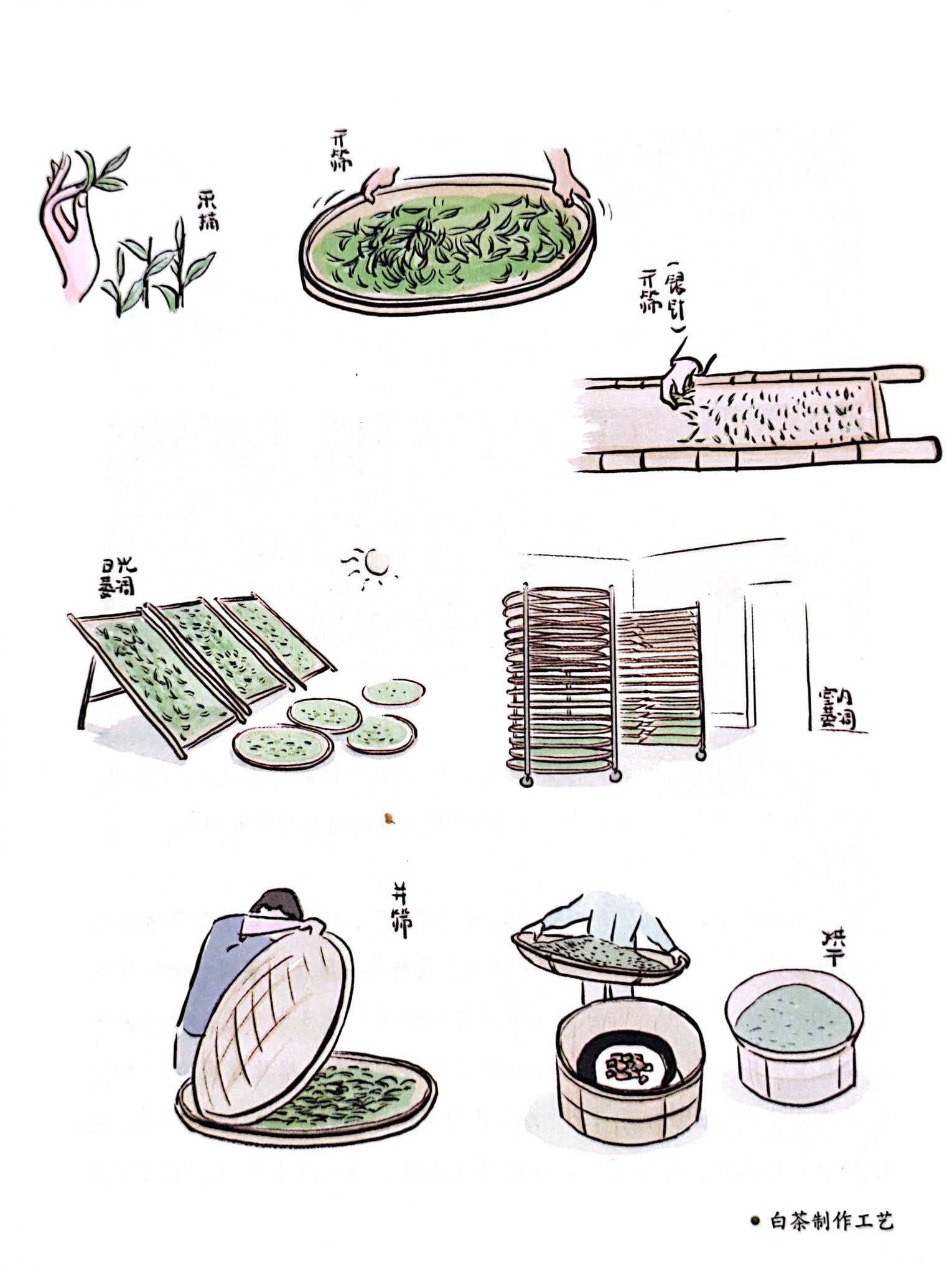
茶树的发芽是季节性的。在没有制茶技术的时候,为了随时喝茶,人们会收集茶树晒干后的芽叶,这就是茶叶加工的开始。这与过去制作药材的方法非常相似。
因此,在大多数文献、史料和传说中,学者和民间都认为,中国白茶的兴起得益于中国人原有的“药食同源”观念。
尤其是在医学非常不发达的古代,中国所有的茶都是从药用开始的。
茶学专家陈椽教授认为,“从白茶的制作过程中,可以看出制茶起源的影子”。
湖南农业大学杨文辉教授也有类似观点,认为中国茶叶生产史上最早的发明不是绿茶,而是白茶。
唐宋宋徽宗时代, 《大观茶论》中就有对白茶的推崇:
“白茶独具一格,与常茶不同,条粗细细,叶薄如玉,无以伦比。”
“白茶自为一种,与常茶不同。其条敷阐chǎn,其叶莹薄。如玉之在琉璃pú,它无与伦也。”
但宋代并没有出现白茶工艺,而是食用了蒸绿茶,所以这种白茶是类似于安吉白茶还是福建白茶,目前仍有争议。
白茶传到政和政和后,政和茶作为北苑贡茶北苑贡茶的附庸,一起进贡朝廷。公元1115年,宋徽宗喝了关荻县产的银针茶后,大喜,赐关帝县“郑和”称号。改关帝为政和。政和也成为中国历史上第一个以年号命名的地方。
明清两代,万历二十八年(1600年)陆应阳陆应阳《光裕记》《广舆记》记载: “富宁府太姥山名茶,名绿雪芽。”
“福宁州太姑山出名茶,名绿雪芽。”
福鼎太姥山红雪洞鸿雪洞顶有一株古茶树“绿雪芽”绿雪芽,被认为是福鼎白茶的原始“母株”母株。
关于它的来历,福鼎还有一个传说。相传在尧尧帝时代,太姥山上有一位名叫兰蓝姑的女子,以种植茶叶为业,非常善良慈善。而她用自己种的绿色雪芽茶作为治疗麻疹的良药,拯救了无数孩子。这位兰娘子被福鼎人称为“太姥娘娘”“太姥娘娘”,相传她在太姥山种下的绿色雪芽茶就是四千年前的古老白茶。
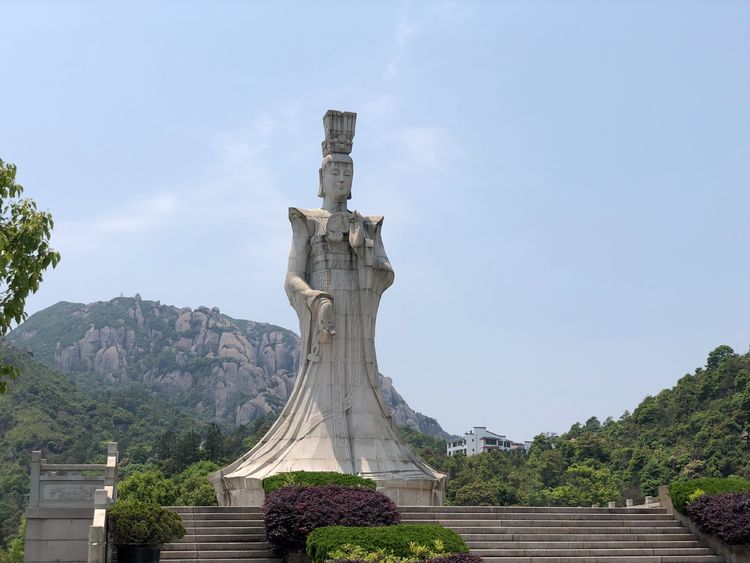
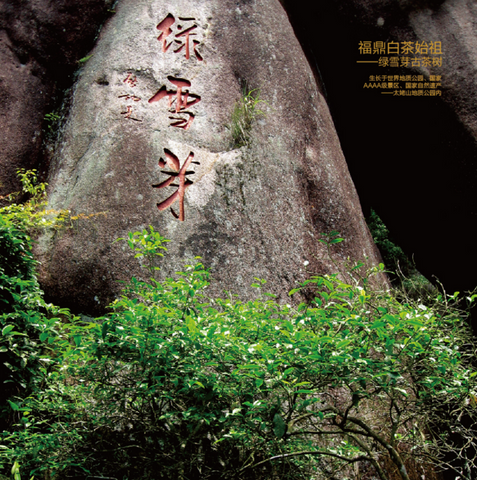
然而,这毕竟是一个传说,据茶业领袖张天福先生在《福建茶史研究》《福建茶史考》一文中说:“白茶制造的历史始于福鼎,然后流传到建阳的水吉水吉,再传到政和。从茶的种类上看,先有银针银针,后有白牡丹白牡丹、贡眉贡眉、寿眉寿眉;先有小白小白白,然后是大白大白,然后是水仙白水仙白。”
《福建白茶调查与研究》 《福建白茶的调查研究》也提到白茶的产地,应以清嘉庆元年(1796年)福鼎创制的银针为标志。

在福鼎,一直有泡芽茶的传统。明万历四十四年(1616年)《福宁州志·食货·公辨》《福宁州志·食货·贡辨》记载: “布茶重84斤12两,价13两2钱2钱,茶叶61斤11两,价银1两4钱7钱9钱。 (福宁府:今福建宁德,福鼎县辖)。
“芽茶84方12两,价银13两2钱2分;叶茶61方11两,价银1两4钱7分9厘。”
这段话说明,明代福鼎商人习惯于按品级以不同的价格出售茶叶。
而小白、大白、水仙白指的是白牡丹的不同品种:菜茶的品种有小白、福鼎大白、福安大白、政和大白,福鼎大白毫统称为大白。水仙品种被称为Narcissus White。这里不得不说一下白茶茶叶品种的出现。
二、现代白茶茶树品种的出现
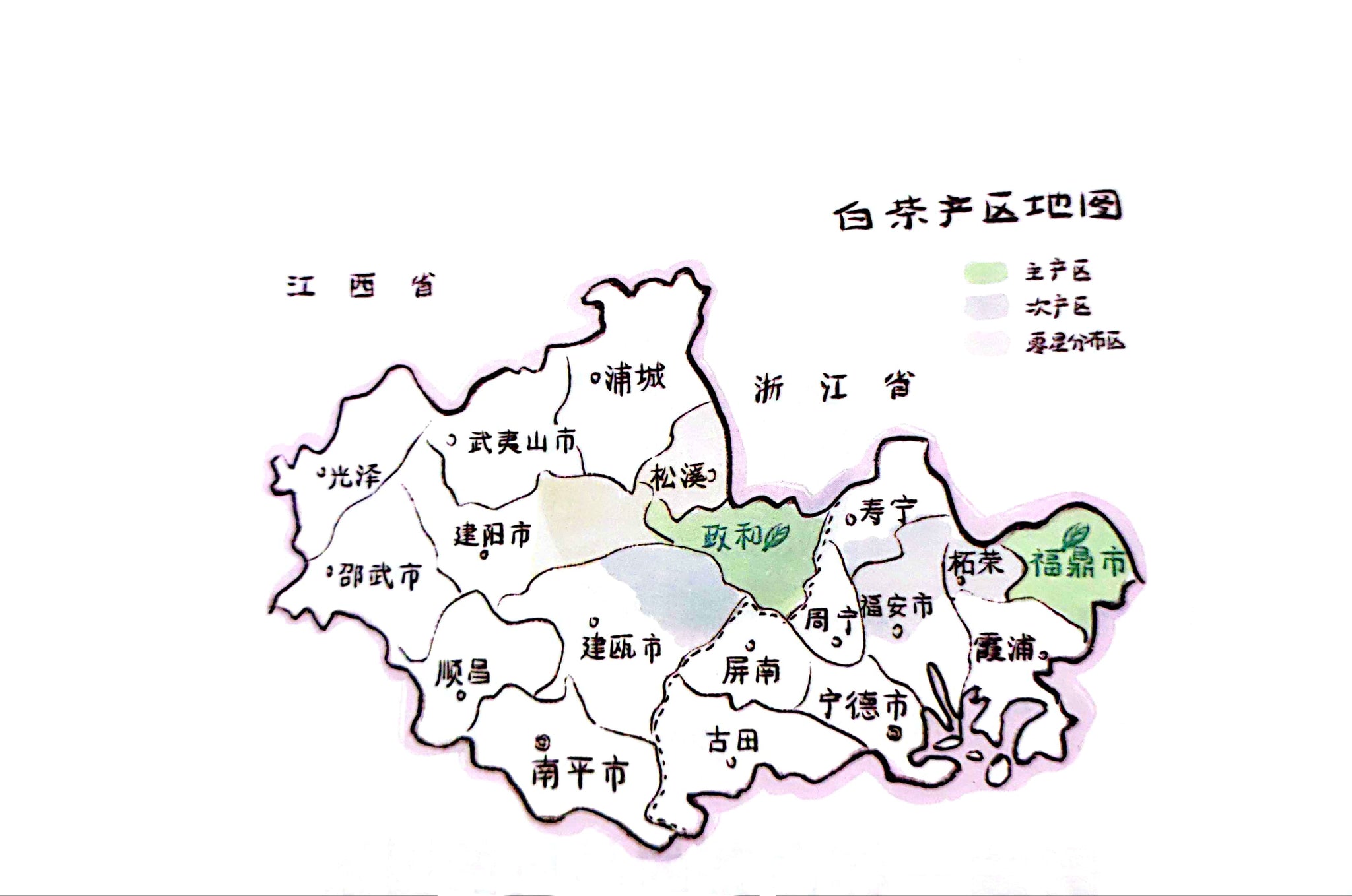
1796年(嘉庆元年)福鼎首创银针后,用杂种茶(菜茶)的芽制成。但是,由于杂种茶(菜茶)的小芽,外观和口感都不好,所以没有得到广泛推广。
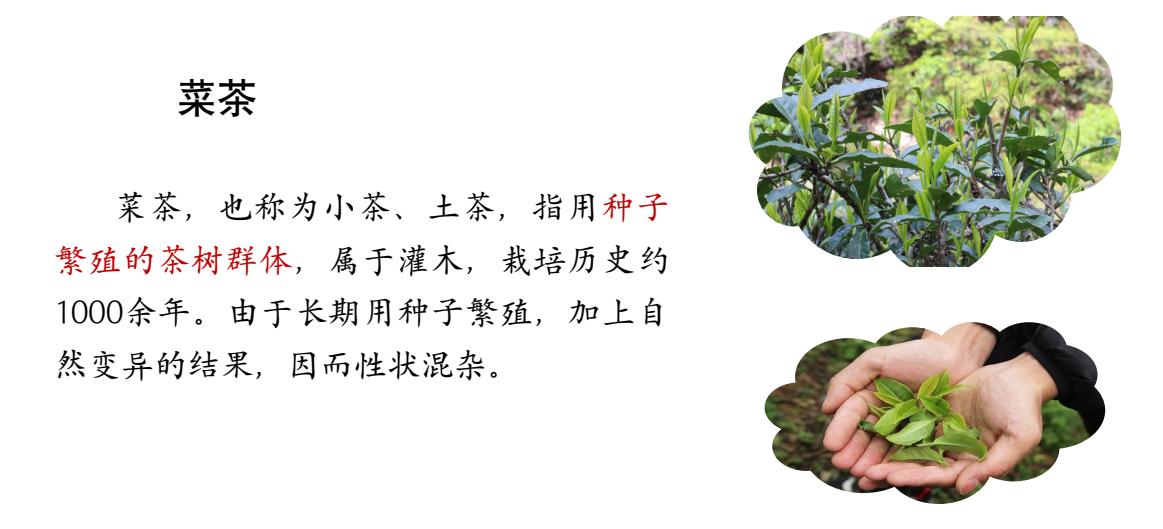
(混种茶是指以种子为原料育成的茶树,为灌木。栽培历史约1000年。由于长期使用种子繁殖,造成自然变异,形状杂乱。)
转机出现在1857年,福鼎点头镇多多镇柏柳村白柳村茶商陈焕陈焕,在太姥山发现一棵长满白毫的大白茶母树。它被带回村里繁育,成为今天的福鼎大白。
1880年,在多多镇汪家洋村王家洋村又选育了另一个优良品种福鼎大好。至此,福鼎白茶具备了稳定发展的基础。
福鼎大白茶和福鼎大白毫茶就是我们今天所说的“花茶一号”和“花茶二号”。在国家级茶树品种和省级认定品种中,以福鼎大白茶为父本育成的茶树品种多达25种。
1880年,在政和铁山镇魏年魏年家旧院内种下一棵野生茶树。这棵树就是政和大白。墙倒塌压倒了这棵树后,新的树苗出人意料地长了出来。当地人无意中发明了压条育苗的方法。偶然发现的政和大白逐渐推广,直到1890年银针问世。
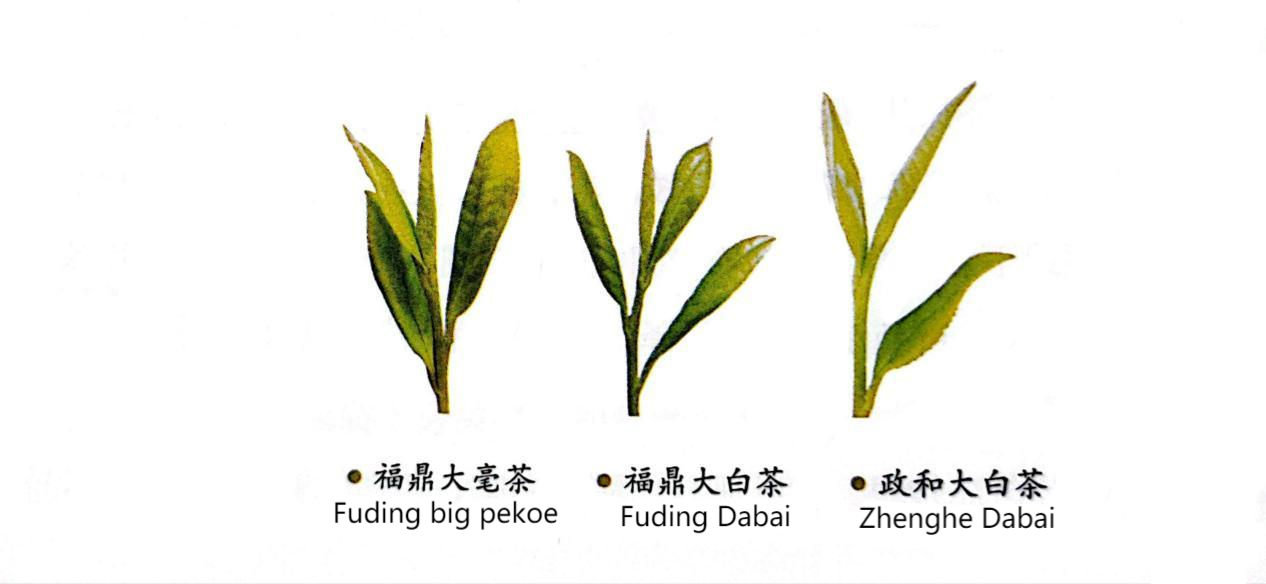
但是,它不是高产品种。与1960年在福安育成成功的福安白茶相比,晚20-30天,生长周期短,产量不如福安白茶。因此,在近年白茶火热之际,当地农户普遍倾向于种植其他产量较高、采摘期较早的品种。
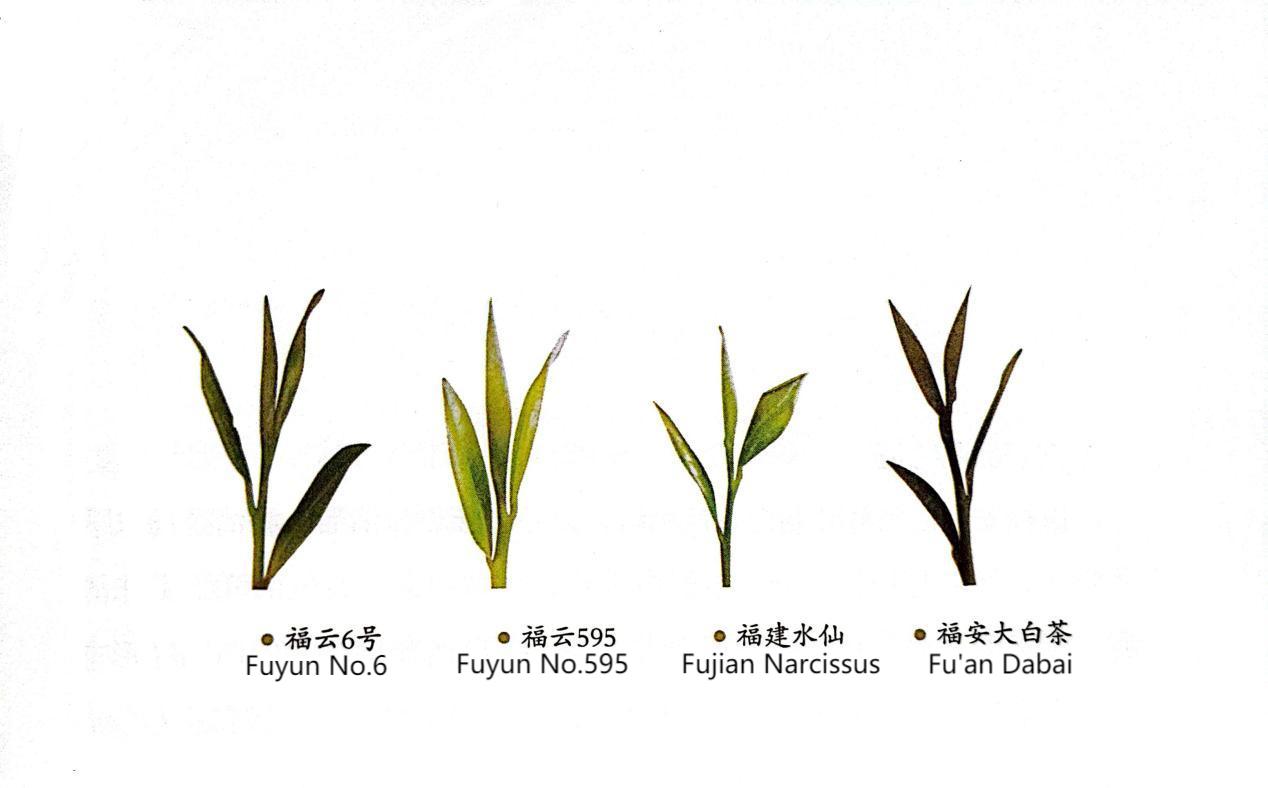
人们习惯上称福鼎出产的银针为“北路银针”,称政和出产的银针为“南路银针”。
冲泡时,福鼎出产的银针汤色呈浅杏黄色,口感清爽;而政和出产的银针一般汤味醇厚,香气扑鼻。
三、白茶的出口历史
说起近代福建的茶叶对外贸易,可以追溯到1860年的五通时期。
以前,茶叶的出口口岸都在广东。
当时出口的茶叶品种主要有绿茶、红茶和乌龙茶。尤其是红茶,因为深受英国人的追捧,长期以来一直是大众热销产品。据福鼎方志记载,当时全国销售的红茶多达2万箱,而白茶仅售出2000箱。
白茶作为当时的小众茶类,也在1890年(光绪十六年)悄然走进了欧洲人的生活。欧美市场的一些消费者会在红茶中加入少许银针,因为他们喜欢银针的形状,以增加美观和品质。
白茶作为当时的小众茶类,也在1890年(光绪十六年)悄然走进了欧洲人的生活。欧美市场的一些消费者会在红茶中加入少许银针,因为他们喜欢银针的形状,以增加美观和品质。
1910年,白茶开始畅销欧美,1912年至1916年是银针的鼎盛时期。当时福鼎、政和两地年产银针1000多担(1担=50公斤),每担银针价值320银元,相当于3.2银元1元一斤银针。而这笔钱可以买100斤大米或者3亩地。
随着第一次世界大战(1917-1921)的爆发以及红茶产区和工艺的影响,红茶市场萎缩。在这种变化中,白茶迅速在出口茶叶中占有一席之地。
到1924年,随着欧洲局势的暂时稳定,白茶的出口量迅速上升。
据史料记载,1926年出口德国的银针收购价高达每吨6520银元。
在高收益的带动下,福建白茶产量大幅增长,迎来空前发展。
当时,卖、泡白茶成为最新最时尚的择偶标准。民间还编了这样一句谚语:嫁女不仰富贵,只问茶叶银针。
国内抗日战争爆发后,福建白茶的生产和出口经历了第一次低潮。这一时期,全国茶叶产量急剧下降。福建白茶产量由抗战前的3280两(1两=50公斤)减至1950年的1100两,外销更是惨淡。
直到新中国成立,白茶生产才逐渐恢复。 1951年恢复到2500多两。 1956年,中国茶叶公司决定改变以往从福建、广东口岸出口白茶的格局,改由福建全部出口白茶。
1968年,为适应港澳市场的需要,提高白茶汤的浓度,中茶福建公司在福鼎市白林茶厂正式开办白茶新工艺,即揉捻枯叶短时间快速干燥,然后快速干燥。干法生产白茶的新工艺。
1986年以后,随着政策的开放,大量的茶叶企业投资于白茶对外贸易,促进了白茶的发展和繁荣。
一芳茶的兴衰,依然离不开一芳的诠释。
2005年,在福鼎市政府的大力支持和推动下,福鼎白茶开始在中国崭露头角; 2009年,福鼎白茶荣获国家地理标志认证标志。
客观来说,白茶虽然出口多年,但国内市场一直不温不火。民间流传下来的老白茶已经很少了,即使有,档次也不高。所以大家购买陈年白茶一定要慎重。( Lapsangstore -10年陈白茶)
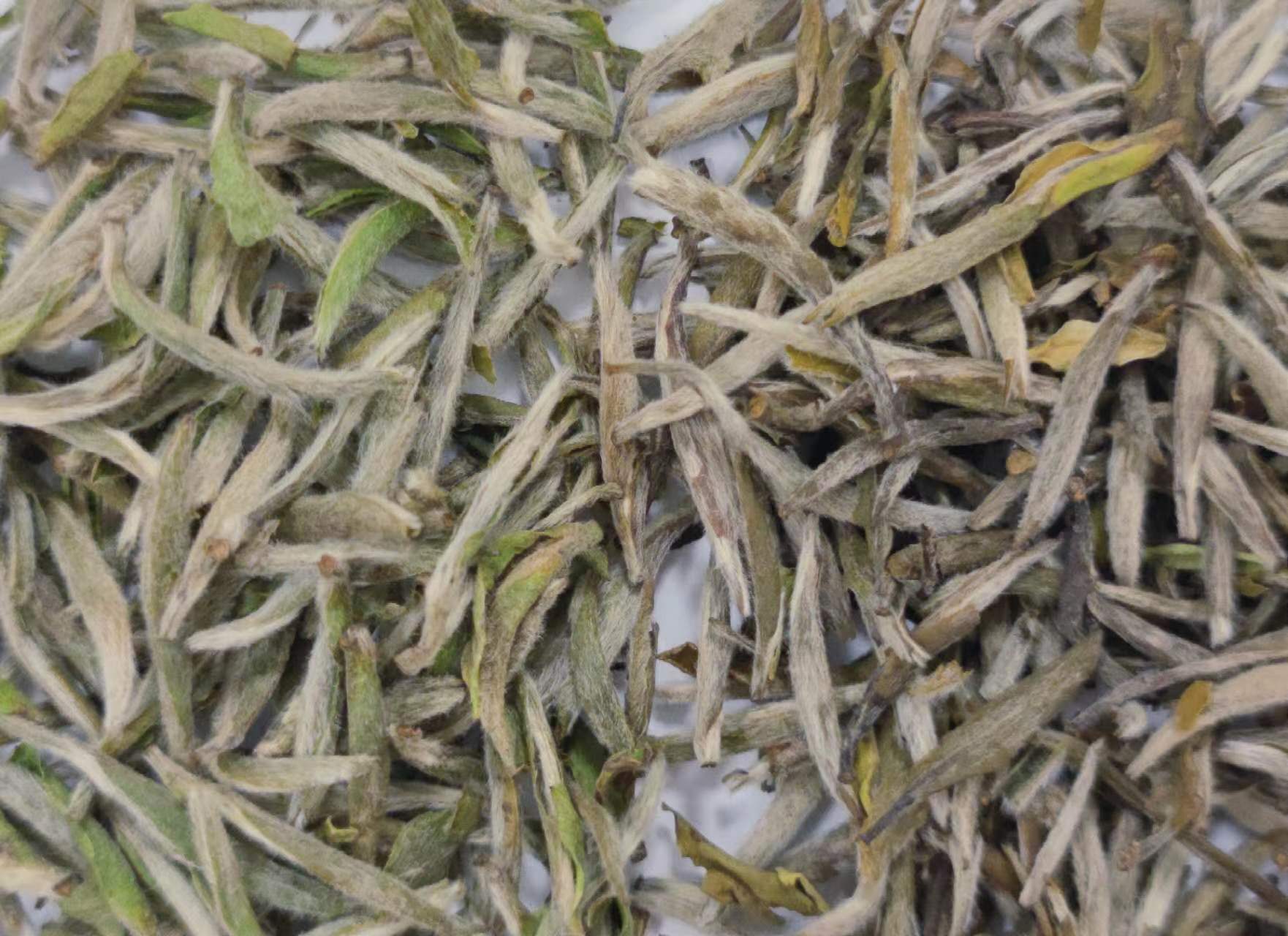
一年和五年银针干茶颜色对比( 正山店-正山茶银针)
此外,白茶在国内市场越来越受欢迎的同时,也影响着云南白茶的生产。比如来自云南的月光白,制作过程和白茶是一样的。它不是油炸或揉捏的。叶子正面是黑色的,背面是白色的,就像月光洒在茶芽上一样。其茶汤呈黄-红-黄变化,滋味蜜香。
时间过得真快,白茶已经流行了10年。再次品尝2014年的小白茶饼,又是另一种不同的感受。小铝袋包装可防止茶叶变质。陈化后,药香、枣香较之前明显浓郁,茶汤浓稠顺滑。

世界上第一杯红茶——正山小种发展史
- 1
- 2
















